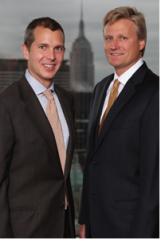
A decade later the reputation of funds of hedge funds has deteriorated. First came the market collapse of 2008, when, instead of providing protection through diversification, the average fund of funds performed worse than the overall hedge fund industry. Then came the dramatic discovery at the end of that year that Bernard L. Madoff Investment Securities was a massive Ponzi scheme, whose key investors included several well-known fund-of-hedge-fund firms. As a result, the fund-of-hedge-funds industry shrank from $798.6 billion in assets under management at the end of 2007 to $571.3 billion two years later, according to Chicago-based Hedge Fund Research.
But it’s far from over for funds of hedge funds. As the global economy continues to sputter, more institutional investors will tap hedge funds in the search for returns, and many of them will opt for the bundled approach. In 2002, not long after D.E. Shaw closed his fund, Appen teamed up with James Hall to launch Magnitude Capital. As global head of UBS’s hedge fund business, Hall helped oversee a $2 billion quantitative global macro hedge fund; he had begun his career as an options floor trader for O’Connor & Associates.
Magnitude’s adherence to quant principles is evident in the techniques it uses to construct portfolios and in the way it evaluates hedge fund managers’ strategies and risk management.
The firm’s evaluation of managers includes analyzing a fund’s underlying risk and return trends and benchmarking performance against its peer group. The firm also places a huge emphasis on risk management, modeling how funds will perform in times of stress. “As an options trader, you get used to thinking about risk in a complex way,” says Hall. “You get used to thinking about portfolios and situations where there are hidden risks.” The quant backgrounds of the Magnitude partners are also reflected in their willingness to invest in more-complex hedge fund strategies. For its first five years, Magnitude had less than $700 million in assets, but by the end of 2007 assets had reached $2 billion. Like most hedge fund managers, Magnitude had a rough year in 2008; its fund was down 21.6 percent. Magnitude ended 2008 with $2.2 billion, and assets had dropped below $1.7 billion by mid-2009 as a result of redemptions. But performance more than bounced back, returning 25.7 percent in a year when the average fund of hedge funds was up 11.47 percent.
The fund’s total assets under management now top $2.2 billion. According to investors, the firm returned 1.2 percent in the first six months of this year, beating the HFRI fund-of-funds composite index, which was down 0.55 percent.
As investors come back to funds of hedge funds, many of them will look for evidence that their managers really are adding value, and this should bode well for Magnitude. Daniel Celeghin, a partner with consulting firm Casey, Quirk & Associates, says funds of hedge funds will thrive — if the industry changes its ways. “To justify asset management fees, as opposed to consulting or advisory fees, funds of hedge funds need to be more than allocators, access providers or risk measurers,” he says. “They need to generate returns. One way to convince investors they can deliver those returns is by employing a systematic process with clear inputs, decision accountability and a way to measure the effectiveness of manager selection over time.”






